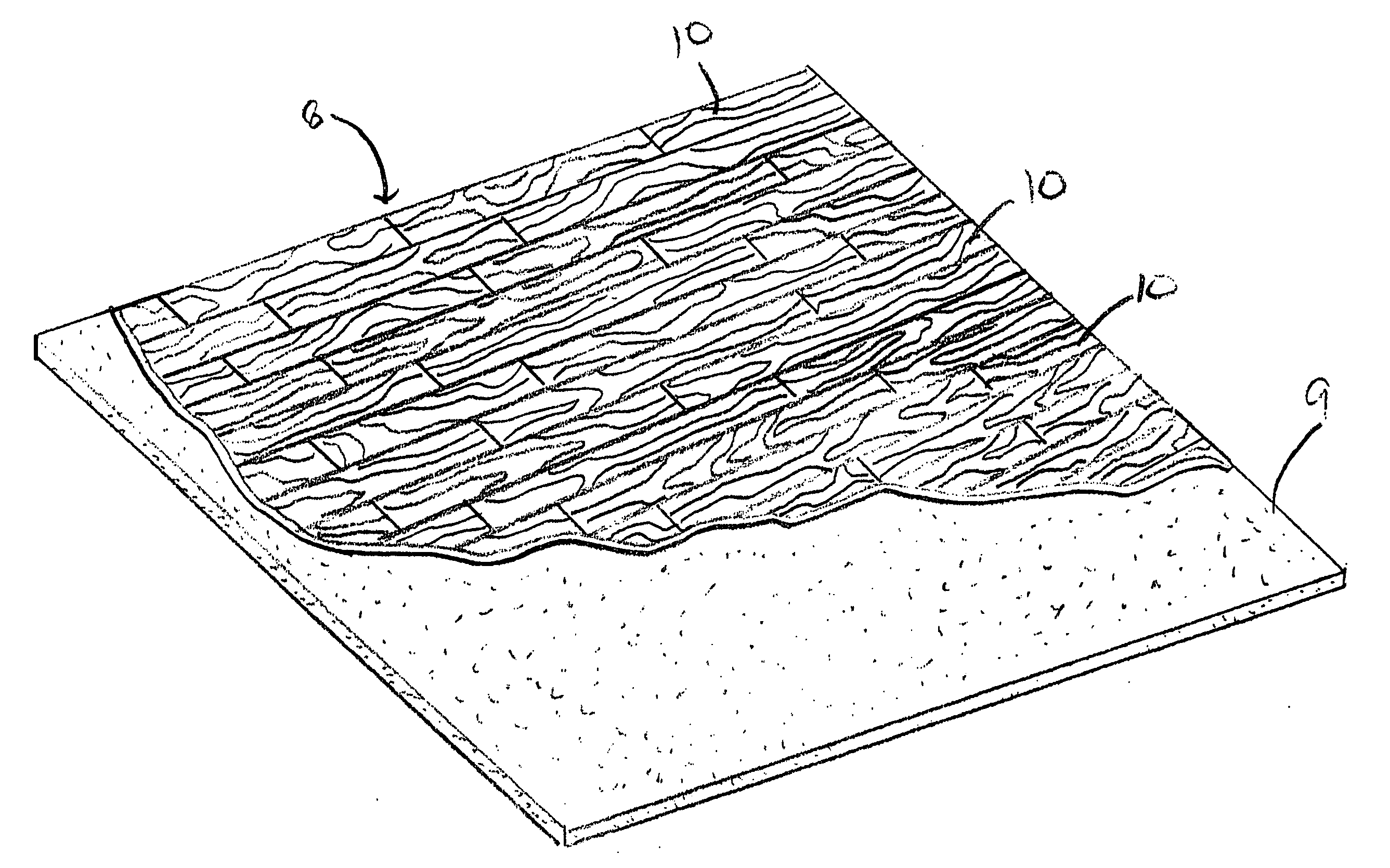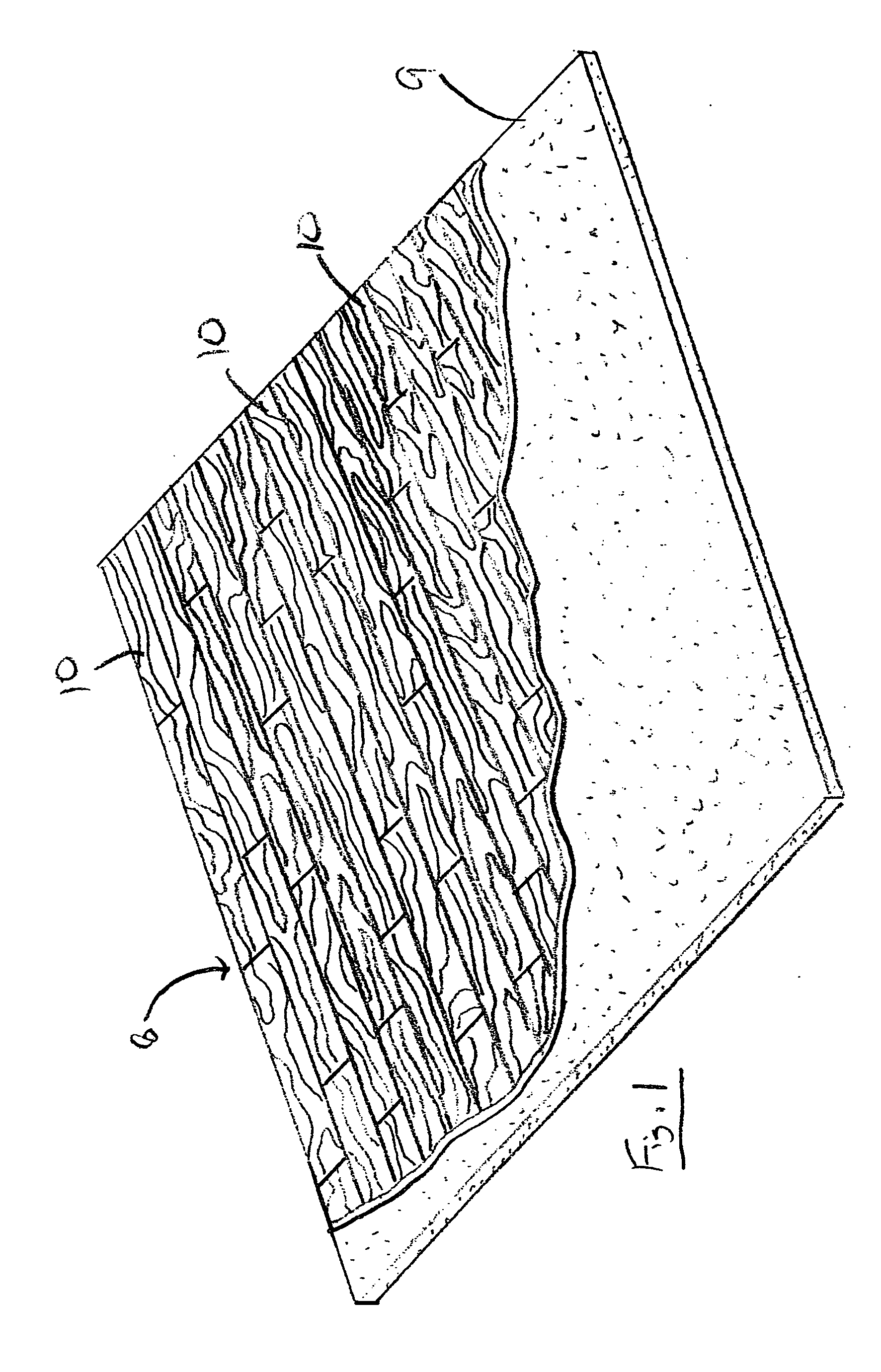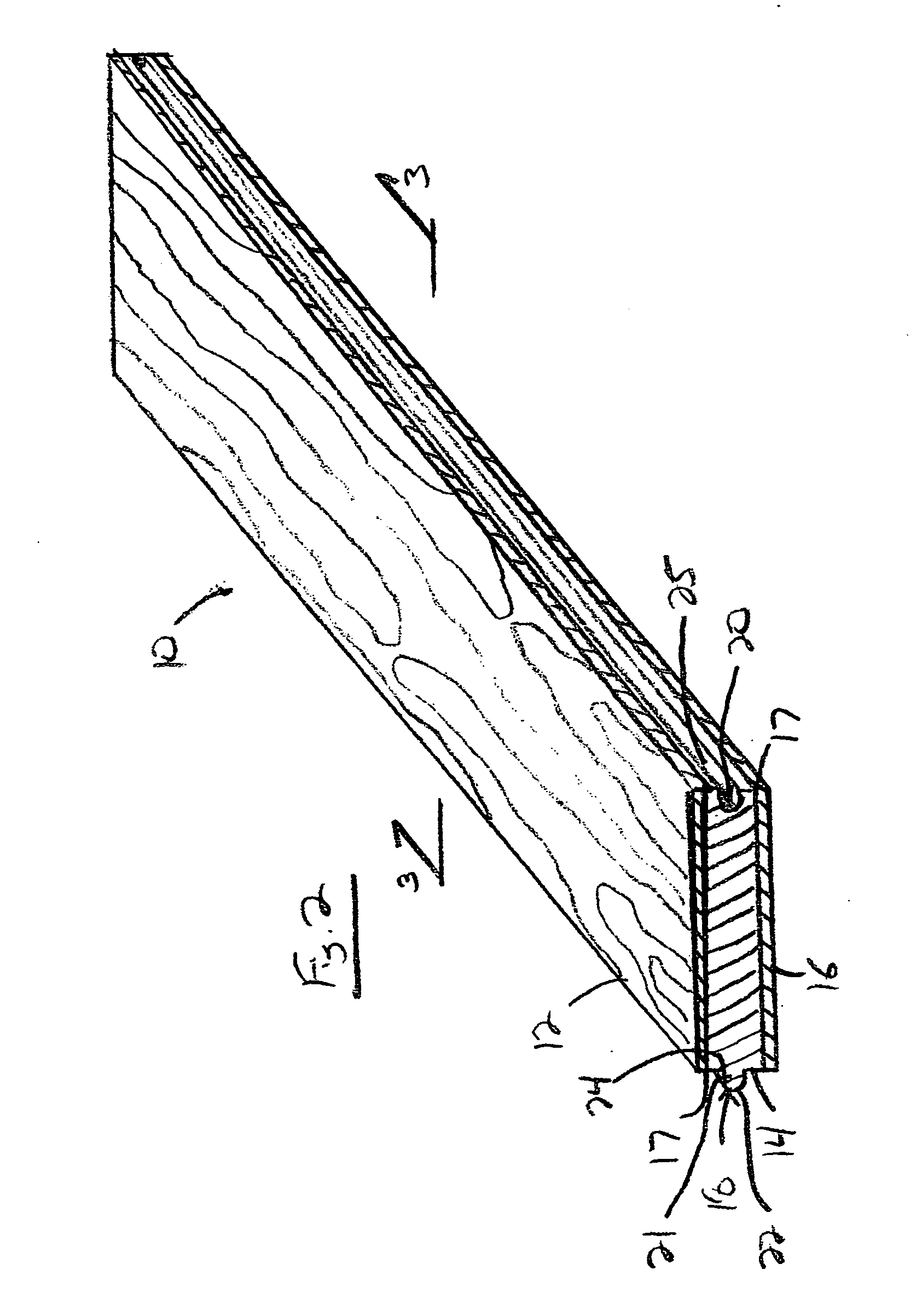Hardwood flooring board
a technology of hardwood flooring and veneer, applied in the field of flooring surfaces, can solve the problems of affecting the appearance quality of hardwood flooring, affecting the durability of wood layered products, and affecting the long-term performance of wood layered products, and achieve the effect of maintaining the hardwood appearance of the board
- Summary
- Abstract
- Description
- Claims
- Application Information
AI Technical Summary
Benefits of technology
Problems solved by technology
Method used
Image
Examples
Embodiment Construction
[0024] With reference now to the drawing figures in which like reference numerals designate like parts throughout the disclosure, a flooring surface is shown generally at 8 in FIG. 1. The surface is formed over a support surface 9, such as a concrete slab, from a number of flooring boards 10 constructed according the present invention.
[0025] Looking now at FIGS. 2-3, each board 10 is between 0.10 inches and 1.00 inches, and preferably about 0.75 inches in thickness, and includes an upper layer 12, a core or middle layer 14 and a lower layer 16. The upper layer 12 and the lower layer 16 can be attached to opposites sides of the middle layer 14 in any conventional manner, such as by using an adhesive or mechanical fasteners, in conjunction with heat and / or pressure, so as long as the upper layer 12 and lower layer 16 are prevented from delaminating or otherwise becoming detached from the middle layer 14 during the installation and use of the boards 10.
[0026] The upper layer 12 is fo...
PUM
 Login to View More
Login to View More Abstract
Description
Claims
Application Information
 Login to View More
Login to View More - R&D
- Intellectual Property
- Life Sciences
- Materials
- Tech Scout
- Unparalleled Data Quality
- Higher Quality Content
- 60% Fewer Hallucinations
Browse by: Latest US Patents, China's latest patents, Technical Efficacy Thesaurus, Application Domain, Technology Topic, Popular Technical Reports.
© 2025 PatSnap. All rights reserved.Legal|Privacy policy|Modern Slavery Act Transparency Statement|Sitemap|About US| Contact US: help@patsnap.com



